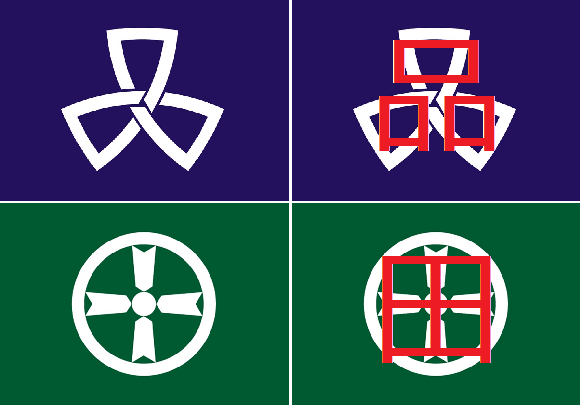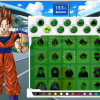kanji (Page 4)
What better way to have a calligraphy master show off their skills than by writing “RocketNews24?”
Say hello to Shuetsu Sato, the man whose handcrafted packing-tape masterpieces guide millions every day.
Japanese is a crazy language, but not for the reasons you might expect. Read More
The kanji with the most strokes – you may run out of ink before you finish writing some of these.
We’re back and ready to take on the third, and most puzzling, type of Japanese text: katakana.
After a year of taxes and a previous year of rings, “safety” is the word that resonates true in the hearts of Japanese in 2015.
With its brushstroke-style Japanese text, this T-shirt might look cool, but it’s literally ridiculous.
With the advent of cellphones, wristwatches have become less and less common, meaning makers have had to get more and more creative capture the attention of customers. One perfect example is this Japanese watch company that has started selling watches that use transforming metal kanji characters to tell the time!
With enough hard work, anyone can learn to speak and read Japanese. But you know you’ve truly made it as a Nihongo master only when you can effortlessly break out a few yojijukugo, or four-kanji idioms. Join us after the jump for 10 of our favourites!
Kanji characters are one of the most fascinating, but also the most troublesome, aspects of the Japanese language—and that goes not just for foreign learners but also for Japanese natives. The Kanji Kentei is a standardized test that you can take to prove your kanji knowledge, but after being drilled on the kanji throughout their school lives Japanese people might not be taken by the idea of sitting for even more exams on the subject.
That’s why the Kanji Kentei administrators, in an effort to encourage people to give up their free time to study kanji and take their exams, has fallen back on the failsafe go-to of Japanese advertising: cute, nostalgic anime.
Japan’s national flag may be well-known for its simplicity—after all it’s just a big red circle in the middle of a field of white—but did you know that’s not Japan’s only flag? Every single prefecture, city, town and village has its own special flag to represent its history or what it’s famous for.
Even more commonly, many of the municipalities’ flags have stylized versions of the kanji found in their names. And when we say stylized, we mean highly stylized. We have here a selection of some of Japan’s kanji-flags, so you can see the creativity that went into each of them.
If you think you’re a kanji master, then get ready to test your skills and see how many you can guess correctly!




















 Can a dirty butthole make you filthy rich in Japan? We’re starting a New Year’s lottery experiment
Can a dirty butthole make you filthy rich in Japan? We’re starting a New Year’s lottery experiment Lacquerware supplier to emperor of Japan and Pokémon team up for new tableware
Lacquerware supplier to emperor of Japan and Pokémon team up for new tableware Here are the top ten foodie factory tours for the fall throughout Japan
Here are the top ten foodie factory tours for the fall throughout Japan The 10 best day trips from downtown Tokyo【Survey】
The 10 best day trips from downtown Tokyo【Survey】 What’s in a Family Mart lucky bag?
What’s in a Family Mart lucky bag? Super Sentai Series to end after this season
Super Sentai Series to end after this season Is it rude to sing along at concerts in Japan? We ask a pro musician for his take
Is it rude to sing along at concerts in Japan? We ask a pro musician for his take We taste the Adult Cream Pie from McDonald’s Japan
We taste the Adult Cream Pie from McDonald’s Japan Awesome website allows you to make your own Dragon Ball character, battle other fighters
Awesome website allows you to make your own Dragon Ball character, battle other fighters Japanese photographer captures cats at their most athletic, adorable, and synchronized moments
Japanese photographer captures cats at their most athletic, adorable, and synchronized moments 7-Eleven Japan starts new temporary luggage storage service in over 300 branches
7-Eleven Japan starts new temporary luggage storage service in over 300 branches Disillusionment at Tsukiji’s tourist-target prices led us to a great ramen restaurant in Tokyo
Disillusionment at Tsukiji’s tourist-target prices led us to a great ramen restaurant in Tokyo Starbucks teams up with 166-year-old Kyoto doll maker for Year of the Horse decorations【Photos】
Starbucks teams up with 166-year-old Kyoto doll maker for Year of the Horse decorations【Photos】 Japan may add Japanese language proficiency, lifestyle classes to permanent foreign resident requirements
Japan may add Japanese language proficiency, lifestyle classes to permanent foreign resident requirements Starbucks Japan releases new zodiac chilled cup drink for 2026
Starbucks Japan releases new zodiac chilled cup drink for 2026 Tokyo’s Tsukiji sushi neighborhood asks tour groups to stay away for the rest of the month
Tokyo’s Tsukiji sushi neighborhood asks tour groups to stay away for the rest of the month Is this the most relaxing Starbucks in Japan?
Is this the most relaxing Starbucks in Japan? Starbucks on a Shinkansen bullet train platform: 6 tips for using the automated store in Japan
Starbucks on a Shinkansen bullet train platform: 6 tips for using the automated store in Japan Street Fighter Hadouken Churros to be launched and eaten in Tokyo, Okami pudding on offer too
Street Fighter Hadouken Churros to be launched and eaten in Tokyo, Okami pudding on offer too Japan’s human washing machines will go on sale to general public, demos to be held in Tokyo
Japan’s human washing machines will go on sale to general public, demos to be held in Tokyo Japanese train company is letting fans buy its actual ticket gates for their homes
Japanese train company is letting fans buy its actual ticket gates for their homes Tokyo considering law requiring more trash cans following litter increase in heavily touristed area
Tokyo considering law requiring more trash cans following litter increase in heavily touristed area Nintendo’s Kirby now delivering orders at Kura Sushi restaurants, but not in Japan
Nintendo’s Kirby now delivering orders at Kura Sushi restaurants, but not in Japan Tokyo event lets you travel back in time, for free, to celebrate 100 years since Showa era start
Tokyo event lets you travel back in time, for free, to celebrate 100 years since Showa era start Sanrio theme park in Japan announces plans to expand into a Sanrio resort
Sanrio theme park in Japan announces plans to expand into a Sanrio resort Survey asks foreign tourists what bothered them in Japan, more than half gave same answer
Survey asks foreign tourists what bothered them in Japan, more than half gave same answer Japan’s deadliest food claims more victims, but why do people keep eating it for New Year’s?
Japan’s deadliest food claims more victims, but why do people keep eating it for New Year’s? We deeply regret going into this tunnel on our walk in the mountains of Japan
We deeply regret going into this tunnel on our walk in the mountains of Japan Studio Ghibli releases Kodama forest spirits from Princess Mononoke to light up your home
Studio Ghibli releases Kodama forest spirits from Princess Mononoke to light up your home Major Japanese hotel chain says reservations via overseas booking sites may not be valid
Major Japanese hotel chain says reservations via overseas booking sites may not be valid Put sesame oil in your coffee? Japanese maker says it’s the best way to start your day【Taste test】
Put sesame oil in your coffee? Japanese maker says it’s the best way to start your day【Taste test】 The top 10 annoying foreign tourist behaviors on trains, as chosen by Japanese people【Survey】
The top 10 annoying foreign tourist behaviors on trains, as chosen by Japanese people【Survey】 No more using real katana for tourism activities, Japan’s National Police Agency says
No more using real katana for tourism activities, Japan’s National Police Agency says Starbucks Japan reveals new sakura drinkware collection, inspired by evening cherry blossoms
Starbucks Japan reveals new sakura drinkware collection, inspired by evening cherry blossoms Super Sentai Series to end after this season
Super Sentai Series to end after this season Is it rude to sing along at concerts in Japan? We ask a pro musician for his take
Is it rude to sing along at concerts in Japan? We ask a pro musician for his take We taste the Adult Cream Pie from McDonald’s Japan
We taste the Adult Cream Pie from McDonald’s Japan Awesome website allows you to make your own Dragon Ball character, battle other fighters
Awesome website allows you to make your own Dragon Ball character, battle other fighters Japanese photographer captures cats at their most athletic, adorable, and synchronized moments
Japanese photographer captures cats at their most athletic, adorable, and synchronized moments The mystery destination of the SoraNews24 end-of-year party left us speechless
The mystery destination of the SoraNews24 end-of-year party left us speechless A Japanese dating app matched our bachelorette with a Buddhist monk, and she learned some things
A Japanese dating app matched our bachelorette with a Buddhist monk, and she learned some things Learn Japanese through ridiculous manga: Death Vote 【Episode #6】
Learn Japanese through ridiculous manga: Death Vote 【Episode #6】 Sliced mayonnaise and white chocolate now exist in Japan, bringing sandwiches to glorious new era
Sliced mayonnaise and white chocolate now exist in Japan, bringing sandwiches to glorious new era Japanese restaurant serves noodles that you fold and eat【Taste test】
Japanese restaurant serves noodles that you fold and eat【Taste test】 Disillusionment at Tsukiji’s tourist-target prices led us to a great ramen restaurant in Tokyo
Disillusionment at Tsukiji’s tourist-target prices led us to a great ramen restaurant in Tokyo Why you shouldn’t call this food “Hiroshimayaki” if you’re talking to people from Hiroshima
Why you shouldn’t call this food “Hiroshimayaki” if you’re talking to people from Hiroshima With sushi breakfasts and hot spring baths, this Tokyo hotel could really use a different name
With sushi breakfasts and hot spring baths, this Tokyo hotel could really use a different name